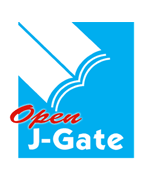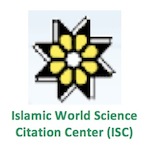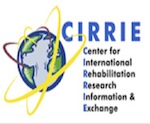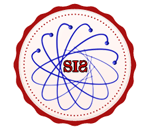


Google Scholar citation report
Citations : 5373
ASEAN Journal of Psychiatry received 5373 citations as per google scholar report
ASEAN Journal of Psychiatry peer review process verified at publons
| Journal Name | ASEAN Journal of Psychiatry (MyCite Report) | ||||
|---|---|---|---|---|---|
| Total Publications | 456 | ||||
| Total Citations | 5688 | ||||
| Total Non-self Citations | 12 | ||||
| Yearly Impact Factor | 0.93 | ||||
| 5-Year Impact Factor | 1.44 | ||||
| Immediacy Index | 0.1 | ||||
| Cited Half-life | 2.7 | ||||
| H-index | 30 | ||||
| Quartile |
|
- Anxiety Disorders
- Behavioural Science
- Biological Psychiatry
- Child and Adolescent Psychiatry
- Community Psychiatry
- Dementia
- Community Psychiatry
- Suicidal Behavior
- Social Psychiatry
- Psychiatry
- Psychiatry Diseases
- Psycho Trauma
- Posttraumatic Stress
- Psychiatric Symptoms
- Psychiatric Treatment
- Neurocognative Disorders (NCDs)
- Depression
- Mental Illness
- Neurological disorder
- Neurology
- Alzheimer's disease
- Parkinson's disease
INSTRUCTIONS FOR AUTHORS
ASEAN Journal of Psychiatry brings articles in all areas related to Anxiety Disorders, Behavioral Neuroscience, Neurobiology, Brain Injury, Neuroimaging, Children and Adolescent Psychiatry, Parkinson's Disease, Epidemiology, Schizophrenia, Memory Disorders and Psychedelics on monthly basis. ASEAN Journal of Psychiatry welcomes the submission of manuscripts that meet the general criteria of significance and scientific excellence. Papers will be published approximately 15 days after acceptance.
Submit manuscript at Online Submission System or editor@aseanjournalofpsychiatry.org
A manuscript number will be e-mailed to the corresponding author within 72 hours.
Publisher Policy Regarding the NIH Mandate
This publisher will support authors by posting the published version of articles by NIH grant-holders and European or UK-based biomedical or life sciences grant-holders to PubMed Central immediately after publication
Editorial Policies and Process
ASEAN Journal of Psychiatry follows a progressive editorial policy that encourages researchers to submit the original research, reviews and editorial observations as articles, well supported by tables and graphic representation.
Article Processing Charges (APC):
ASEAN Journal of Psychiatry is self-financed and does not receive funding from any institution/government. Hence, the Journal operates solely through processing charges we receive from the authors and some academic/corporate sponsors. The handling fee is required to meet its maintenance. Being an Open Access Journal, It does not collect subscription charges from readers that enjoy free online access to the articles. Authors are hence required to pay a fair handling fee for processing their articles. However, there are no submission charges. Authors are required to make payment only after their manuscript has been accepted for publication.
This APC is valid for the current calendar year and may be changed at any time at the sole discretion of the publisher. The average PDF length of an article in ASEAN Journal of Psychiatry is 8 pages, and in case of any extension of pages, an additional charge of 300 USD per page would be applicable. Any extensive editing or art work editing would be charged additionally with APC. The submitting author is responsible for the APC and must confirm, at the time of submission, that he/she will organise payment of the APC after acceptance of article for publication. This responsibility may not be delegated to any third party unless agreed by the publisher. The basic article processing fee or manuscript handling cost is as per the price mentioned below on the other hand it may vary based on the extensive editing, colored effects, complex equations, extra elongation of no. of pages of the article, etc.
|
Manuscript Type |
Article Processing Charges |
||
|
USD |
EURO |
GBP |
|
|
Regular Articles |
3798 |
3600 |
3180 |
|
Special Issue Article |
2200 |
2300 |
2100 |
Average Article prorcessing time (APT) is 55 days
The basic article processing fee or manuscript handling cost is as per the price mentioned above on the other hand it may vary based on the extensive editing, colored effects, complex equations, extra elongation of no. of pages of the article, etc.
Author Withdrawal Policy
As author might decide to withdraw their manuscript from time to time after submission, it is author's prerogative to change their mind. If the author is willing to withdraw their manuscript within 5 days of its initial submission, no charges will be applied. Please do contact us for further discussions in case of any concerns or queries regarding the withdrawal policy.
Fast Editorial Execution and Review Process (FEE-Review Process):
ASEAN Journal of Psychiatry is participating in the Fast Editorial Execution and Review Process (FEE-Review Process) with an additional prepayment of $99 apart from the regular article processing fee. Fast Editorial Execution and Review Process is a special service for the article that enables it to get a faster response in the pre-review stage from the handling editor as well as a review from the reviewer. An author can get a faster response of pre-review maximum in 3 days since submission, and a review process by the reviewer maximum in 5 days, followed by revision/publication in 2 days. If the article gets notified for revision by the handling editor, then it will take another 5 days for external review by the previous reviewer or alternative reviewer.
Acceptance of manuscripts is driven entirely by handling editorial team considerations and independent peer-review, ensuring the highest standards are maintained no matter the route to regular peer-reviewed publication or a fast editorial review process. The handling editor and the article contributor are responsible for adhering to scientific standards. The article FEE-Review process of $99 will not be refunded even if the article is rejected or withdrawn for publication.
The corresponding author or institution/organization is responsible for making the manuscript FEE-Review Process payment. The additional FEE-Review Process payment covers the fast review processing and quick editorial decisions, and regular article publication covers the preparation in various formats for online publication, securing full-text inclusion in a number of permanent archives like HTML, XML, and PDF, and feeding to different indexing agencies.
Publishing Standards and Collaboration Policy
The journal actively collaborates and partners with reputed third-party journals and publishers to facilitate DOI assignment, content linking, and indexing across diverse platforms. This ensure maximum visibility and discoverability of your work. However, in alignment with international standards for science, technology, medicine and business publishing, the original copyright exclusively resides with our journal and its contributors. We are dedicated to protecting your authorship rights while enhancing the global impact and reach of your research.
Submission of an Article
In order to reduce delays, authors should adhere to the level, length and format of the Journals at every stage of processing right from manuscript submission to each revision stage. Submitted articles should have a 300 words summary/abstract, separate from the main text. The summary should provide a brief account of the work by clearly stating the purpose of the study and the methodology adopted, highlighting major findings briefly. The text may contain a few short subheadings of no more than 40 characters each.
Language Translation Services
With an intention to take scientific & health care information globally, this publisher has introduced language translation services. This service enables the author to reach the global audience in many major world languages at a time as our language experts in Spanish, French and German can translate the article from English into different world languages as per the author’s requirement. This service grants a global presence to the author and his/her scholarship.
As this is an open access publisher, we do not seek or get financial assistance from any organization. Authors who wish to avail our translation services and who are interested to publish their paper in other languages, are requested to pay the following additional charges along with the article processing charges.
|
Word Count |
Estimated Price in USD |
|
Upto 1500 words |
USD 150 |
|
1500 - 3000 words |
USD 225 |
|
3000 - 6000 words |
USD 350 |
|
6000 - 10000 words |
USD 499 |
|
Above 10,000 words |
Price will be fixed upon discussion |
Manuscripts accepted for publication will be published in both English and other languages as recommended by the author.
Formats for the publisher, it formats literary works such as research articles, reviews, abstracts, addendums, announcements, article-commentaries, book reviews, rapid communications, letters to the editor, annual meeting abstracts, conference proceedings, calendars, case-reports, corrections, discussions, meeting-reports, news, obituaries, orations, product reviews, hypotheses and analyses.
Article Preparation Guidelines
- Authors are expected to attach an electronic covering letter completely mentioning the type of manuscript (e.g, Research article, Review articles, Brief Reports, Case study etc.) Unless invited on a special case, authors cannot classify a particular manuscript as Editorials or Letters to the editor or concise communications.
- Confirm that each individual named as an author meets the uniform requirements of the ASEAN Journal of Psychiatry criteria for authorship.
- Please make sure that the article submitted for review/publication is not under consideration elsewhere simultaneously.
- Clearly mention financial support or benefits if any from commercial sources for the work reported in the manuscript, or any other financial interests that any of the authors may have, which could create a potential conflict of interest or the appearance of a conflict of interest with regard to the work.
- A clear title of the article along with complete details of the author/s (professional/institutional affiliation, educational qualifications and contact information) must be provided in the tile page.
- Corresponding author should include address, telephone number, fax number, and e-mail address in the first page of the manuscript and authors must address any conflict of interest with others once the article is published.
- Number all sheets in succession, including references, tables, and figure legends.
- Title page is page 1. On the first page, type the running head (short title for top of each page), title (which cannot include any acronyms), names of the authors and their academic degrees, grants or other financial supporters of the study, address for correspondence and reprint requests, and corresponding author's telephone and fax numbers and e-mail address.
Guidelines for Research Articles
- Research articles are articles written based on the empirical/secondary data collected using a clearly defined research methodology, where conclusion/s is drawn from the analysis of the data collected.
- The information must be based on original research that adds to the body of knowledge in ASEAN Journal of Psychiatry.
- Article/s should provide a critical description or analysis of the data presented while adding new and rapidly evolving areas in the field.
- Include an abstract of at least 300 words with 7 to 10 important keywords.
- The abstract should be divided into Objective, Methods, Results, and Conclusion.
- Research articles must adhere to a format constituting the introduction followed by a brief review of relevant literature, methodology applied (to collect the data), discussion and References, Tables, and Figure Legends.
Review Articles
- Review articles are written based mostly on secondary data that is falling in line with the theme of the journal. They are brief, yet critical discussions on a specific aspect of the subject concerned. Reviews generally start with the statement of the problem with a brief abstract of 300 words and few key words. Introduction generally brings the issue forward to the readers followed by analytical discussion with the help of necessary tables, graphs, pictures and illustrations wherever necessary. It summarizes the topic with a conclusion. All the statements or observations in the review articles must be based on necessary citations, providing complete reference at the end of the article.
Commentaries
- Commentaries are opinion articles written mostly by the veteran and experienced writers on a specific development, recent innovation or research findings that fall in line with the theme of the journal. They are very brief articles with the title and abstract that provides the gist of the topic to be discussed, with few key words. It straight away states the problems and provides a thorough analysis with the help of the illustrations, graphs and tables if necessary. It summarizes the topic with a brief conclusion, citing the references at the end.
Case Study
- Case studies are accepted with a view to add additional information related to the investigative research that advances in the field of ASEAN Journal of Psychiatry.
- It should add value to the main content/article submitted, by providing key insights about the core area. Cases reports must be brief and follow a clear format such as Cases and Methods Section (That describe the nature of the clinical issue and the methodology adopt to address it), discussion section that analyzes the case and a Conclusion section that sums up the entire case.
Editorials
- Editorials are concise commentaries on a currently published article/issue on ASEAN Journal of Psychiatry. Editorial office may approach for any such works and authors must submit it within three weeks from the date of receiving invitation.
Clinical Images
- Clinical Images are nothing but photographic depictions of ASEAN Journal of Psychiatry and it should not exceed more than 5 figures with a description, not exceeding 300 words. Generally no references and citations are required here. If necessary, only three references can be allowed.
- Do not add separate figure legends to clinical images; the entire clinical image text is the figure legend. Images should be submitted with the manuscript in one of the following formats: .tiff (preferred) or .eps.
Letters to the Editor/Concise Communications
- Letters to the editor should be limited to commentaries on previous articles published with specific reference to issues and causes related to it. It should be concise, comprehensive and brief reports of cases or research findings. It does not follow a format such as abstract, subheads, or acknowledgments. It is more a response or the opinion of the reader on a particular article published and should reach the editor within 6 months of article publication.
Acknowledgement: This section includes acknowledgment of people, grant details, funds, etc.
Note: If an author fails to submit his/her work as per the above instructions, they are requested to maintain clear titles namely headings, subheading.
References:
Only published or accepted manuscripts should be included in the reference list. Meetings abstracts, conference talks, or papers that have been submitted but not yet accepted should not be cited. All personal communications should be supported by a letter from the relevant authors.
The publisher uses the numbered citation (citation-sequence) method. References are listed and numbered in the order that they appear in the text. In the text, citations should be indicated by the reference number in brackets. Multiple citations within a single set of brackets should be separated by commas. When there are three or more sequential citations, they should be given as a range. Example: "... now enable biologists to simultaneously monitor the expression of thousands of genes in a single experiment [1,5-7,28]". Make sure the parts of the manuscript are in the correct order for the relevant journal before ordering the citations. Figure captions and tables should be at the end of the manuscript.
Authors are requested to provide at least one online link for each reference as following (preferably PubMed).
Because all references will be linked electronically as much as possible to the papers they cite, proper formatting of the references is crucial. Please use the following style for the reference list:
Examples
Published Papers
- Chen H, Guo X. Obesity and functional disability in elderly Americans. J Am Geriatr Soc. 2008; 56:689-694.
- Zamboni M, Mazzali G, Zoico E, Harris TB, Meigs JB, Di F,V,et al. Health consequences of obesity in the elderly: a review of four unresolved questions. Int Jobes. 2005; 29:1011-1029.
- Gherbon A. Prevalence of obesity in a group of elderly. Eur Scient J. 2014; 10(9): 28-40.
Note: Please list the first five authors and then add "et al." if there are additional authors.
Electronic Journal Articles Entrez Programming Utilities
Books
- Baggot JD (1999) Principles of drug disposition in domestic animals: The basis of Veterinary Clinical Pharmacology. (1stedn), W.B. Saunders Company, Philadelphia, London, Toranto.
- Zhang Z (2006) Bioinformatics tools for differential analysis of proteomic expression profiling data from clinical samples. Taylor & Francis CRC Press.
Conferences
- Hofmann T (1999) The Cluster-Abstraction Model: unsupervised learning of topic hierarchies from text data. Proceedings of the International Joint Conference on Artificial Intelligence.
Tables
These should be used at a minimum and designed as simple as possible. We strongly encourage authors to submit tables as .doc format. Tables are to be typed double-spaced throughout, including headings and footnotes. Each table should be on a separate page, numbered consecutively in Arabic numerals and supplied with a heading and a legend. Tables should be self-explanatory without reference to the text. Preferably, the details of the methods used in the experiments should be described in the legend instead of the text. The same data should not be presented in both table and graph form or repeated in the text. Cells can be copied from an Excel spread sheet and pasted into a word document, but Excel files should not be embedded as objects.
Note: If the submission is in PDF format, the author is requested to retain the same in .doc format in order to aid in completion of process successfully.
Figures
The preferred file formats for photographic images are .doc, TIFF and JPEG. If you have created images with separate components on different layers, please send us the Photoshop files.
All images must be at or above intended display size, with the following image resolutions: Line Art 800 dpi, Combination (Line Art + Halftone) 600 dpi, Halftone 300 dpi. See the Image quality specifications chart for details. Image files also must be cropped as close to the actual image as possible.
Use Arabic numerals to designate figures and upper case letters for their parts (Figure 1). Begin each legend with a title and include sufficient description so that the figure is understandable without reading the text of the manuscript. Information given in legends should not be repeated in the text.
Figure legends: These should be typed in numerical order on a separate sheet.
Tables and Equations as Graphics
If equations cannot be encoded in MathML, submit them in TIFF or EPS format as discrete files (i.e., a file containing only the data for one equation). Only when tables cannot be encoded as XML/SGML can they be submitted as graphics. If this method is used, it is critical that the font size in all equations and tables is consistent and legible throughout all submissions.
Supplementary Information
All Supplementary Information (figures, tables and Summary diagram/, etc.) is supplied as a single PDF file, where possible. File size within the permitted limits for Supplementary Information. Images should be a maximum size of 640 x 480 pixels (9 x 6.8 inches at 72 pixels per inch).
Proofs and Reprints
Electronic proofs will be sent as an e-mail attachment to the corresponding author as a PDF file. Page proofs are considered to be the final version of the manuscript and no changes will be made in the manuscript at the proof stage. Authors can freely download the PDF file. Hard copies of the documents are available on request. Please click on the link for the charges. https://www.IOMConline.org/pdfs/IOMC-Group-reprints-order-form.pdf
Copyright
All works published by this publisher are under the terms of the Creative Commons Attribution License. This permits anyone to copy, distribute, transmit and adapt the work provided the original work and source is appropriately cited.


























